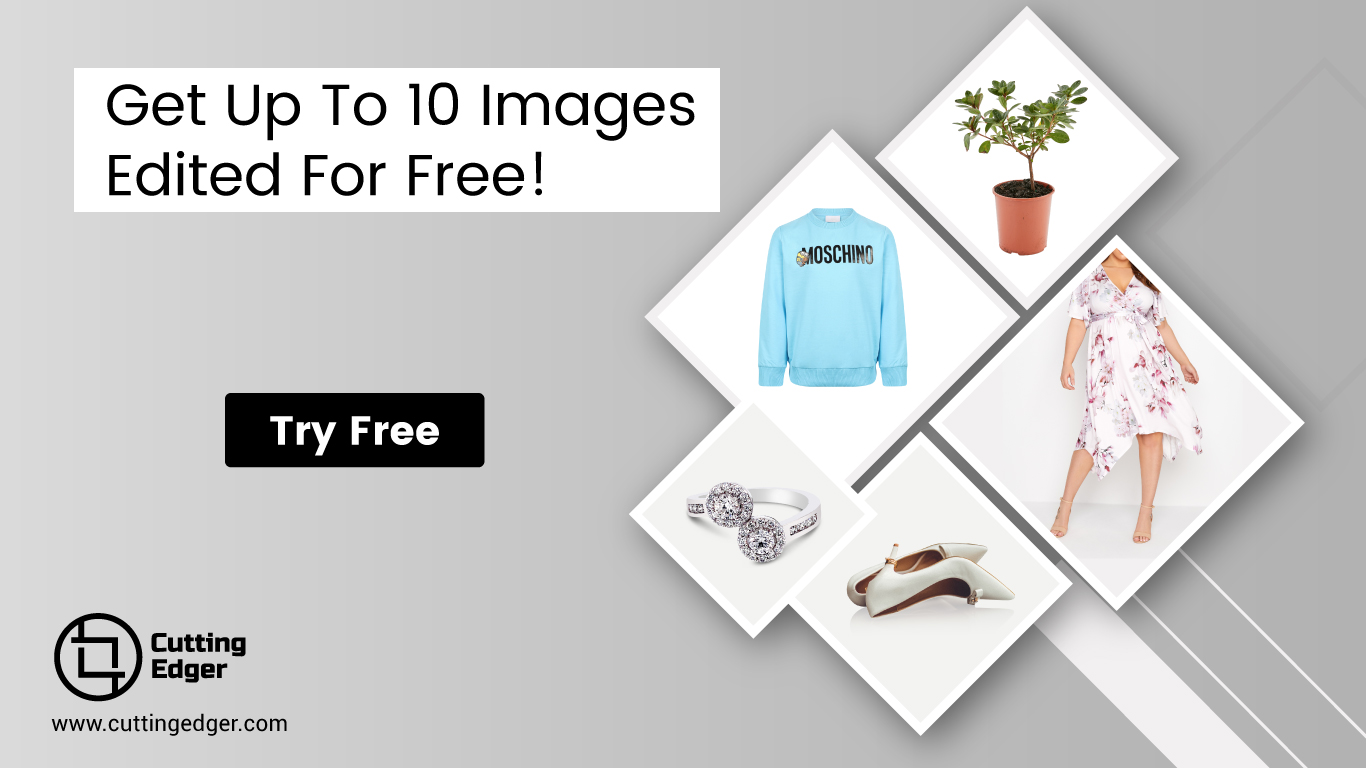Product Image Masking: Enhancing Your Visuals
by Delwar Hussain / Last Update: September 18, 2023
Welcome to the world of product image masking, where simple images undergo a magical transformation to become visually appealing masterpieces. In this article, we’ll explore how product image masking works and the various techniques involved. These techniques, like layer masking and alpha channel masking, are powerful tools that enable designers to enhance product visuals and showcase them in creative ways.
Throughout this journey, we’ll learn how image masking helps fix imperfections, create transparent backgrounds, and even combine multiple images seamlessly. It’s a journey of discovery, uncovering the secrets of graphic design and the endless possibilities that product image masking offers.
Are you excited to learn how to enhance your product visuals with image masking? Let’s get started!
Understanding Image Masking Techniques
Image masking techniques are fundamental tools in the world of graphic design and image editing. Let’s explore some of the key methods used to enhance product visuals:
Layer Masking
Layer masking is a simple yet effective technique that allows you to hide or reveal specific parts of an image. It works like a stencil, enabling you to apply changes only to selected areas while leaving the rest of the image untouched. This method is widely used in product photography to achieve seamless and precise edits.
Clipping Masking
Clipping masking is another important technique used to control the visibility of an image based on the content of another layer. By “clipping” an image to a shape or layer below it, you can create unique visual effects and emphasize specific elements within a composition.
Alpha Channel Masking
Alpha channel masking involves using the transparency information (alpha channel) of an image to define which parts should be visible and which should be transparent. It is commonly used for complex images with irregular shapes, allowing you to remove backgrounds or isolate objects without compromising the image quality.
Understanding these image masking techniques will set the foundation for enhancing product visuals and give you the creative freedom to bring your design ideas to life. Now, let’s delve deeper into the art of background removal using masking methods.
The Art of Background Removal
Background removal is a crucial aspect of product image masking that can significantly enhance the overall visual appeal of an image. Let’s explore the different methods and approaches used for background removal:
Background Removal Methods
There are various approaches to removing backgrounds from images, each with its own advantages and suitability for different scenarios. One popular method is automatic background removal using AI-powered tools. These advanced algorithms can intelligently detect and remove backgrounds, saving valuable time and effort for designers.
For more intricate images or cases where precision is paramount, manual background removal techniques come into play. With manual editing, designers can meticulously fine-tune the background removal to achieve pixel-perfect results, especially when dealing with complex product shapes.
Creating Transparent Backgrounds
Transparent backgrounds play a vital role in product presentation, especially when you want to showcase your products seamlessly on different platforms or backgrounds. By using masking techniques, you can remove unwanted backgrounds and create transparent areas around the product, making it easy to integrate the image into various design layouts.
Whether you opt for automatic background removal or manual editing, mastering the art of creating transparent backgrounds through masking will elevate your product visuals to a professional level.
Product Image Retouching with Masking
Product image retouching is a crucial step in perfecting product visuals and ensuring they captivate the audience. Masking techniques can significantly enhance the retouching process, allowing you to achieve precise adjustments. Let’s explore two essential aspects of product image retouching with masking:
Fixing Imperfections with Spot Healing
In product photography, imperfections are common, ranging from minor blemishes to distracting background elements. With spot healing using masking, you can target and remove these imperfections seamlessly. By creating a mask around the areas that require retouching, you can apply adjustments selectively, leaving the rest of the image unaffected.
Spot healing with masking ensures that your product images appear flawless and professional, making them more appealing to potential customers.
Fine-tuning Colors and Exposure
Color and exposure are vital factors in product presentation, as they can influence how customers perceive and connect with the product. Masking enables selective color adjustments and exposure fine-tuning, allowing you to enhance specific elements without affecting the entire image.
For instance, you can intensify the color of a product while keeping the background neutral or adjust the exposure of a product to make it stand out in a crowded catalog. These precise adjustments help maintain color consistency and visual harmony across your product range.
By mastering product image retouching with masking, you can bring out the best in your products, providing customers with a compelling visual experience that drives engagement and conversions.
Showcasing Product Variations
When offering a range of products with different variants such as colors, sizes, or shapes, effectively showcasing these variations is crucial to attract and engage potential customers. Masking techniques come to the rescue once again, providing you with the tools to highlight product diversity and versatility.
Displaying Color Variants
Color variations can significantly impact a customer’s decision-making process. With masking, you can effortlessly showcase different color options for a single product without the need for multiple photoshoots. By applying masks to individual color variants, you can create a consistent look that allows customers to visualize the product in their preferred hue.
Efficiently managing large volumes of color variants becomes feasible with masking, streamlining the process and saving time and resources.
Highlighting Size and Shape Variations
Masking is equally adept at accentuating size and shape differences among products. Whether you’re dealing with varying product dimensions or unique product shapes, creating masks around these elements helps emphasize their distinctive features.
This technique ensures that customers get a clear understanding of each product’s attributes and helps them make informed purchasing decisions.
With masking’s ability to showcase product variations, you can present an extensive and diverse product catalog while maintaining visual consistency and appeal.
Advanced Techniques for Product Image Masking
As you gain proficiency in basic masking techniques, it’s time to explore more advanced methods that unlock a new realm of creative possibilities in product image editing. Let’s dive into these advanced techniques that cater to intricate product shapes and composite image creation:
Masking Complex and Intricate Objects
Some products have intricate shapes, such as jewelry, detailed artwork, or products with fine textures. Masking such objects can be challenging due to their complexity. However, advanced masking tools come to the rescue, enabling designers to tackle these challenges with precision and finesse.
Advanced masking techniques offer more control over the selection process, allowing designers to create accurate masks around intricate objects. With a mix of vector masks, precise brush strokes, and adjustment layers, you can achieve stunning results that highlight every intricate detail.
Combining Multiple Images Seamlessly
Composite images are a powerful way to present products in creative and eye-catching settings. Whether you’re creating a lifestyle shot with a model or showcasing product variations together, masking plays a crucial role in seamlessly merging multiple images.
By skillfully using masks, you can blend different elements, adjust lighting and perspective, and create compelling compositions that stand out. This technique adds a touch of realism to your product images and enhances their overall visual impact.
Mastering these advanced masking techniques grants you creative freedom and empowers you to create captivating product visuals that leave a lasting impression on your audience.
Practical Tips for Effective Product Image Masking
While mastering masking techniques is essential, incorporating efficient workflows and maintaining quality standards are equally crucial for successful product image editing. Let’s explore some practical tips to streamline your masking process and ensure high-quality results:
Choosing the Right Tools
Selecting the appropriate image editing software with robust masking capabilities is the first step towards efficiency. Look for tools that offer a wide range of masking features, including layer masking, alpha channel masking, and vector masks. Additionally, consider software that supports batch processing and automation to handle large volumes of images seamlessly. We recommend using Adobe Photoshop for these types of works.
Maintaining High-Quality Standards
Consistency and quality control are vital for creating a professional image catalog. Avoid common mistakes such as visible artifacts or uneven edges in masked images. Regularly check and refine your workflow to ensure that each product image meets the desired standards.
Setting up templates and presets for common masking tasks can save time and maintain consistency across your product range.
By adopting these practical tips, you can optimize your product image masking process, ensuring that your visuals are polished, consistent, and visually appealing.
Future Trends in Product Image Masking
The world of image editing and manipulation is constantly evolving, and product image masking is no exception. As technology advances, new trends are emerging that will shape the future of enhancing product visuals. Let’s explore some of the exciting developments and potential trends in product image masking:
Advancements in AI-Powered Masking
AI-powered image editing tools have already revolutionized the way we approach image masking. As AI algorithms continue to improve, we can expect more sophisticated and accurate automatic background removal and object isolation. This will streamline the masking process, saving time for designers while maintaining high-quality results.
Integration of 3D Masking Techniques
As 3D product visuals become more prevalent in e-commerce and marketing, 3D masking techniques will play a significant role. With 3D masking, designers can precisely define areas of visibility in three-dimensional space, offering even more realistic and immersive product presentations.
Real-Time Masking Solutions
Real-time masking solutions will likely become more accessible, allowing designers to preview and apply masking adjustments instantly. This feature will enhance the efficiency of the editing process, enabling quick iterations and experimentation.
Enhanced Masking for Augmented Reality (AR) Applications
As AR becomes more integrated into the e-commerce landscape, advanced masking techniques will be crucial for seamlessly overlaying virtual products onto the real world. Precise masking will ensure that virtual objects interact seamlessly with their surroundings, enhancing the overall AR experience.
Embracing these future trends in product image masking will keep you at the forefront of visual enhancement, empowering you to create stunning visuals that captivate audiences in the ever-evolving digital landscape.
Conclusion
In the fast-paced world of e-commerce and digital marketing, captivating visuals are a driving force behind success. Product image masking proves to be a valuable ally in achieving visually stunning and engaging product presentations. Throughout this journey, we have explored the artistry of masking techniques and their profound impact on enhancing product visuals.
From the foundational layer masking to the intricate 3D masking, we have unveiled the power of these techniques to create seamless composite images, remove backgrounds, and showcase product variations with finesse. The future holds even greater promise with advancements in AI-powered masking and real-time solutions, enabling designers to unlock endless creative possibilities.
As you embark on your product image masking endeavors, remember the practical tips to optimize your workflow and maintain quality standards. Embrace the future trends in masking to stay ahead in the ever-evolving digital landscape.
With the knowledge and skills gained, you are now equipped to harness the potential of product image masking and elevate your visual storytelling. Let your creativity soar, and watch as your enhanced product visuals captivate and inspire audiences around the globe.
Article by
Delwar Hussain
Image Processing Expert, Photography Enthusiast, Blogger, COO at Cutting Edger
Over 18 years of experience in Graphic Design, Image Editing, 3D Modeling/Rendering and Digital Products, I have got opportunity to work with different local and multi-national companies, among of them GraphicPeople, Modern Herbal Group and British Broad Casting (BBC) can be highlighted. During my career I have worked with Coca-Cola, Turkish Airlines, Singapore British American Tobacco, Dell, Pfizer Pharmaceuticals, Indeed.com, International Hotel Group (IHG), Santander Bank, Quad Inc. Adidas, Nike, Dove etc. Having 18 years of experience and being a Co-Founder and COO of Cutting Edger is providing Post Production Image Editing, 3D Modeling and Rendering, Desktop Publishing and Digital Products like Web Design and Development, Software Development, etc.

